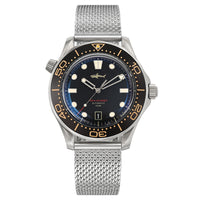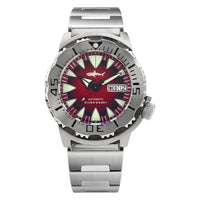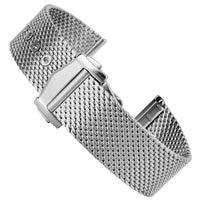Watch knowledge includes quartz and mechanical watches
The distinction between various watches
Clocks and watches are precision timing devices distinguished by the size of the internal machine. A clock is a movement with a diameter of more than 50mm and a thickness of more than 12mm; a pocket watch is a movement with a diameter of 37-50mm and a thickness of 4- 6 mm; a watch is a movement with a diameter of less than 37 mm; and a women's watch is a movement with a diameter of no more than 20 mm or a movement area of no more than 314 square millimeters.
- Classification:
A watch is one of the smallest, most powerful, and most precise machines ever created by humans. Clocks in the watch industry are classified into two types based on the type of oscillator used:
1. A mechanical watch is one that is controlled by a mechanical oscillator.
2. A quartz watch is one that is controlled by an electronic oscillator—a quartz oscillator.
Furthermore, hours, minutes, and seconds must be calculated and displayed in the form of a dial. The watch is classified into three types based on its display mode:
Ordinary watches display only the hours, minutes, and seconds; complex function watches display additional display functions in addition to the hours, minutes, and seconds.
- Mechanical watch types include:
There are two types of mechanical watches: manual mechanical watches and automatic mechanical watches:
1. Hand-wound movements: by turning the watch's handle, the mainspring in the watch movement is fully wound, and after that, completely push the gears to run, and completely push the hands to go.
2. Automatic mechanical watch: The weight of the oscillating weight in the movement generates the power of the automatic winding movement. When the arm wearing the watch swings, it causes the oscillating weight to rotate while also causing the main spring in the watch to wind.
- Quartz watch types include:
Digital quartz electronic watch: a watch that combines the piezoelectric effect of quartz crystal with a bipolar liquid crystal display, with all functions completed by electronic components.
Pointer quartz watch: The quartz watch is powered by a silver oxide button battery. The quartz vibrator is oscillated to form an oscillation circuit source after the silver oxide button battery supplies a specific voltage to the integrated circuit via the oscillation circuit and the quartz resonator.
It combines the advantages of an automatic mechanical watch and a quartz watch. It does not require a battery, and the wearer has the option of winding it manually or charging it automatically. Its electronic quartz device improves its accuracy, resulting in a monthly error of less than ten seconds. Its operating principle is to use the arm's dancing to drive the oscillating weight inside the watch to generate energy to drive the internal micro-motor into energy, thereby providing enough power for the quartz device in the watch, and the excess power will be stored by the micro-capacitor for backup.
The first option is to convert light energy into electrical energy using solar chips, and then store the electrical energy in a recyclable titanium-lithium-ion rechargeable battery. The electrical energy from the battery then generates a pulse signal to the coil via an integrated circuit, resulting in a magnetic drive. The stepping motor converts electric energy into kinetic energy, which is then used to rotate the gear and move the pointer to display the time. It can run in the dark for 40-180 days after being fully charged. The travel time is precise, and the rechargeable battery has a life of ten years.
- The characteristics of the two watches:
1. Mechanical watches must be wound up whereas quartz watches do not.
2. The mechanical watch case is fairly thick, whereas the quartz watch case can be quite thin.
3. The mechanical watch is labeled Automatic, while the quartz watch is labeled Quartz.
4. The mechanical watch has a few seconds of daily error, whereas the quartz watch has a daily error of less than 0.5 seconds.



